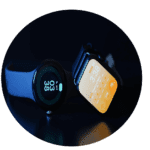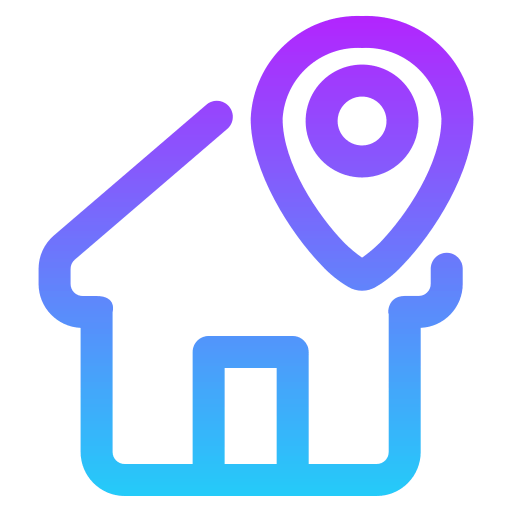Shattered Privacy Recovering Your Digital Footprint After a onlyfans leaked Exposure.
- Shattered Privacy: Recovering Your Digital Footprint After a onlyfans leaked Exposure.
- Understanding the Scope of the Problem
- Legal Recourse and Reporting Options
- Documenting the Evidence
- Understanding Copyright Claims
- Technical Steps to Take
- Protecting Your Accounts
- Monitoring Your Digital Footprint
- Emotional Support and Mental Well-being
Shattered Privacy: Recovering Your Digital Footprint After a onlyfans leaked Exposure.
The digital age has ushered in an era of unprecedented connectivity, but also a heightened risk of privacy breaches. One increasingly common and deeply concerning issue is the unauthorized distribution of personal content, including those instances termed ‘onlyfans leaked‘. This involves the non-consensual sharing of images and videos, often stemming from platforms designed for creator-fan interaction. The consequences can be devastating, ranging from emotional distress and reputational damage to potential legal ramifications. People are finding out about their material found online and are deeply concerned about what steps they should take in regards to their privacy and illegal distribution of material.
This article aims to provide a comprehensive overview of the implications of such breaches, outlining the steps individuals can take to mitigate the damage and reclaim control over their digital footprint. We will explore the legal avenues available, the technical measures one can employ, and the emotional support resources that can assist in navigating this difficult situation, offering guidance on regaining a sense of agency in the face of digital exposure.
Understanding the Scope of the Problem
The unauthorized sharing of personal content, particularly that labelled as ‘onlyfans leaked’, is a complex issue driven by a variety of factors. While the platforms themselves often have security measures in place, determined individuals can find ways to circumvent these protections. The motivation behind such actions can range from malicious intent – such as revenge or extortion – to simple disregard for privacy. It’s important to remember that even if content was initially shared with consent on a platform, that consent does not extend to its unlawful distribution elsewhere.
The speed at which information spreads online exacerbates the problem. Once content is released into the wild, it can propagate across numerous websites, forums, and social media platforms, making complete removal incredibly challenging. The persistence of this content can have long-lasting effects, impacting an individual’s personal and professional life. Understanding the mechanisms of this distribution is the first step toward effective damage control.
| OnlyFans | Watermarking, content verification, reporting mechanisms | Account hacking, phishing, insider threats |
| Reporting tools, content removal policies | Screenshotting, direct sharing of links | |
| Moderation, subreddit-specific rules | Anonymous posting, difficulty in content removal |
Legal Recourse and Reporting Options
Individuals whose content has been shared without their consent have several legal options available. These vary depending on jurisdiction, but common avenues include filing a civil lawsuit for invasion of privacy, defamation, or copyright infringement. In some cases, criminal charges may also be applicable, particularly if the unauthorized sharing involved hacking, extortion, or a similar malicious act. It’s crucial to gather evidence, such as screenshots or URLs of the offending content, and to consult with an attorney specializing in internet law.
Reporting the incident to the relevant authorities is also vital. In the United States, you may report to the FBI’s Internet Crime Complaint Center (IC3). You should also report the content to the platform where it was originally uploaded, as well as any websites or social media platforms where it’s being shared. Most platforms have established procedures for removing unauthorized content, and a timely report can significantly increase the chances of success.
Documenting the Evidence
Preserving evidence is paramount when dealing with a privacy breach. This includes taking screenshots of the offending content, noting the URLs where it is hosted, and documenting the date and time of discovery. It’s also helpful to identify any individuals involved in the unauthorized sharing, if possible. Original files, if available, should be carefully secured and preserved. This evidence will be critical whether you pursue legal action or simply seek to have the content removed from the internet. Evidence of harm experienced, such as documented emotional distress, can further strengthen a legal claim.
Understanding Copyright Claims
If you created the content, you typically hold the copyright. This gives you the legal right to control how your work is reproduced, distributed, and displayed. Unauthorized sharing of your content can constitute copyright infringement, which gives you grounds for a legal claim. You can send a Digital Millennium Copyright Act (DMCA) takedown notice to websites hosting the infringing content, requiring them to remove it. This process can be effective, but it requires careful adherence to the DMCA’s requirements. Understanding your rights as a copyright holder is essential in protecting your intellectual property.
Technical Steps to Take
Beyond legal options, there are several technical steps you can take to mitigate the spread of unauthorized content. This includes using search engine removal tools to suppress the content from appearing in search results. Google and other search engines offer mechanisms for requesting the removal of content that violates privacy. While these requests aren’t always successful, they can significantly reduce the visibility of the offending material.
You can also utilize online reputation management services, which specialize in suppressing negative or unwanted content from search results. These services often employ a combination of techniques, including creating positive content to outrank the negative content, and proactively monitoring the internet for mentions of your name or image. Remember to establish strong passwords and enable two-factor authentication on all online accounts to prevent future breaches.
- Google Search Console: Use to request removal of specific URLs from Google’s search results.
- TinEye Reverse Image Search: Identify websites where your images are being used.
- Reputation Management Services: Help bury unwanted content in search results.
Protecting Your Accounts
A crucial step in preventing future breaches is to actively protect your online accounts. This starts with creating strong, unique passwords for each account and avoiding the use of easily guessable information. Enabling two-factor authentication adds an extra layer of security by requiring a second verification method, such as a code sent to your phone. Be cautious of phishing emails or suspicious links, as these are common tactics used by hackers to gain access to accounts. Regularly review your account security settings and update your passwords as needed. Proactive security measures are the best defense against unauthorized access.
Monitoring Your Digital Footprint
Regularly monitoring your digital footprint can help you identify and address potential privacy issues before they escalate. Search your name and image online to see what information is publicly available. Use Google Alerts to receive notifications when your name or image is mentioned on the internet. Review your social media privacy settings to control who can see your content. By staying vigilant and proactively managing your online presence, you can minimize the risk of your personal information being exposed.
Emotional Support and Mental Well-being
Experiencing a privacy breach can be deeply traumatic. The emotional impact can range from anxiety and depression to shame and humiliation. It’s essential to seek support from trusted friends, family members, or a mental health professional. Talking about your feelings and experiences can help you process the trauma and develop coping mechanisms. Remember that you are not alone, and there are resources available to help you navigate this difficult time.
There are numerous online and offline support groups dedicated to helping individuals who have experienced privacy breaches. These groups provide a safe and supportive environment where you can connect with others who understand what you’re going through. Don’t hesitate to reach out for help if you’re struggling to cope with the emotional consequences of a ‘onlyfans leaked’ exposure. Taking care of your mental health is just as important as taking legal or technical steps.
- Therapy: Seek professional counseling to address emotional distress.
- Support Groups: Connect with others who have experienced similar situations.
- Self-Care: Prioritize your physical and mental well-being.
Dealing with the aftermath of a privacy breach involving content labeled as ‘onlyfans leaked’ is a complex and challenging process. It requires a multi-faceted approach that addresses the legal, technical, and emotional aspects of the situation. By understanding your rights, taking proactive steps to protect your privacy, and seeking support when needed, you can begin to reclaim control over your digital footprint and navigate the road to recovery.





 Bluetooth AirPods
Bluetooth AirPods Wireless Bluetooth Earbuds
Wireless Bluetooth Earbuds Wireless Handsfree
Wireless Handsfree




 Electric Geyser
Electric Geyser
 Wireless Charger
Wireless Charger Wired Mobile Charger
Wired Mobile Charger

